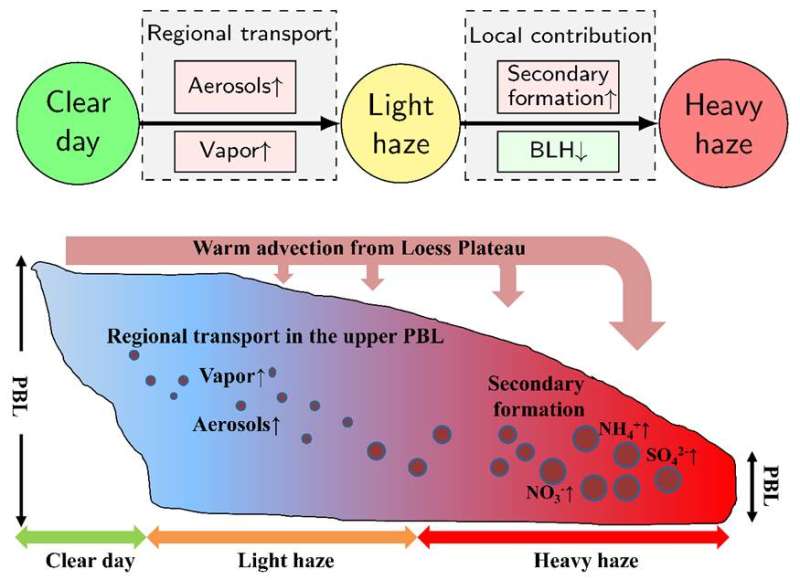Where does heavy air pollution in Beijing originate?

Beijing's latest smog alert has dragged on into the first week of 2017. The joint prevention and control policy for atmospheric pollution in the Beijing-Tianjin-Hebei region was announced after the heavy haze event that occurred on 1 January 2013. But researchers are still uncertain about how to control and prevent smog.
The research group led by WANG Yuesi from the Institute of Atmospheric Physics (IAP) has monitored the evolution of regional atmospheric mixing layer height (MLH) and attenuated backscattering coefficient in the Beijing-Tianjin-Hebei region for years. Their study has included chemical component analysis and provided insight about the regional heavy haze formation mechanism. "Beijing is located to the north of the North China Plain. During the initial polluted period, it is affected by southerly transport at the latitude of 500 to 1000 m. Once the pollution is formed, the MLH will decrease quickly to 500m and increase the pollutant concentration rapidly via the compression mechanism. Meanwhile, the hygroscopic growth and heterogeneous chemical processes that are enhanced under high relative humidity will facilitate the explosive growth of secondary particulate matters."
The co-existence of those factors can further exacerbate pollution. At this time, although the impact of regional transport is less important, local emissions such as those from motor vehicles are unable to diffuse, thus resulting in a consistent increase of the pollutant concentrations in the MLH.
The heavy haze formation in Beijing is therefore depicted as "initiated by the regional transport, mainly from coal burning in surrounding areas, and intensified by the local secondary formation originated from motor vehicles." This conclusion is presented in papers written by TANG Guiqian, LIU Zirui, WANG Lili, HU Bo, XIN Jinyuan and ZHU Xiaowan and is confirmed consistently by some new experimental research.
According to these studies, pre-warning should be implemented two or three days ahead of the heavy haze onset, and the regional stationary emissions, especially the elevated sources, should be controlled and reduced in advance. Once the pollution forms, the local emissions should be controlled, thus enabling efficient restraint of the peak values of contaminant.
More information: Xiaowan Zhu et al, Regional pollution and its formation mechanism over North China Plain: A case study with ceilometer observations and model simulations, Journal of Geophysical Research: Atmospheres (2016). DOI: 10.1002/2016JD025730
Journal information: Journal of Geophysical Research - Atmospheres
Provided by Institute of Atmospheric Physics, Chinese Academy of Sciences




















